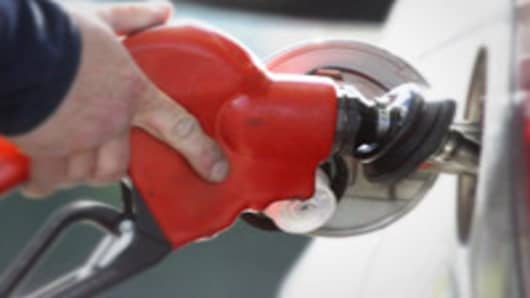Okay, okay. Catchy headline aside, $4 gasoline does matter to many people. Gas prices are extremely regressive. They impact the poor much more than anyone else, especially when their gas need is what economists call “inelastic,” which is just a fancy word for something where demand doesn’t change based on price. If someone needs to get to work, they need to get to work, and they’ll fill up their gas tank to do so largely regardless of price.
That said, for the majority of the country, $4 gas isn’t going to doom us or our economy. Here’s why.
According to the U.S. Department of Transportation, the average peak-earning-age driver puts in about 15,000 miles per year. A married couple will do about 30,000 miles per year. Assuming the family wagon gets about 22 miles per gallon, that’s about 1,360 gallons of gasoline per year. At $3 per gallon, a family is probably spending around $4,100 per year on gas. Ouch.
Thankfully, auto fuel economy is soaring. Let’s say you just can’t drive the 2004 minivan anymore and you take the plunge on a new car. Chances are you’re going to get at least 10 percent greater fuel efficiency with the new car.
That’s probably a low estimate, but let’s play it safe. If driving miles remain constant, that 10 percent increase in fuel efficiency saves you about 130 gallons of gas per year. At $4 per gallon, you’ll spend $520 less on gas than you would have when you were rolling around in your old gas guzzler.
While that $520 doesn’t make up the entire price difference between $3 and $4 gas, keep a few things in mind.
First, thanks to the power of inflation , $4 a gallon gas a few years ago isn’t $4 a gallon gas today. You’re actually paying somewhere in the $3.64 range in 2007 dollars today.
What’s more, this is a payroll tax cut year. That 2 percent from our paycheck we aren’t paying to Uncle Sam goes directly to our wallets and mitigates much of the impact. A family making $50,000 per year will save $1,000 per year thanks to the cut.
Finally, we’ve grown a little more used to these prices. They just aren’t as shocking as they were a few years ago. Plus, as CNBC’s excellent car guru Phil LeBeau points out, prices have risen gradually, not suddenly like a few years ago. This gives families more time to prepare for the extra cost and alter some of their driving habits.
The greatest proof may be in the car sales pudding though. Auto sales are soaring, and there’s optimism we could sell 14 million to 15 million vehicles this year. Though things are still tough for millions of families, the fact that people are willing to even go out and buy a new car may be the strongest sign of all that wallets are open.
In fact, a greater threat to consumer spending may be all those new car payments millions are making.
Of course, if gas prices keep rising we can revisit the economic doom argument. But right now it just doesn’t add up. After all, it looks like $5 is the new $4 when it comes to gas prices and the economy.



